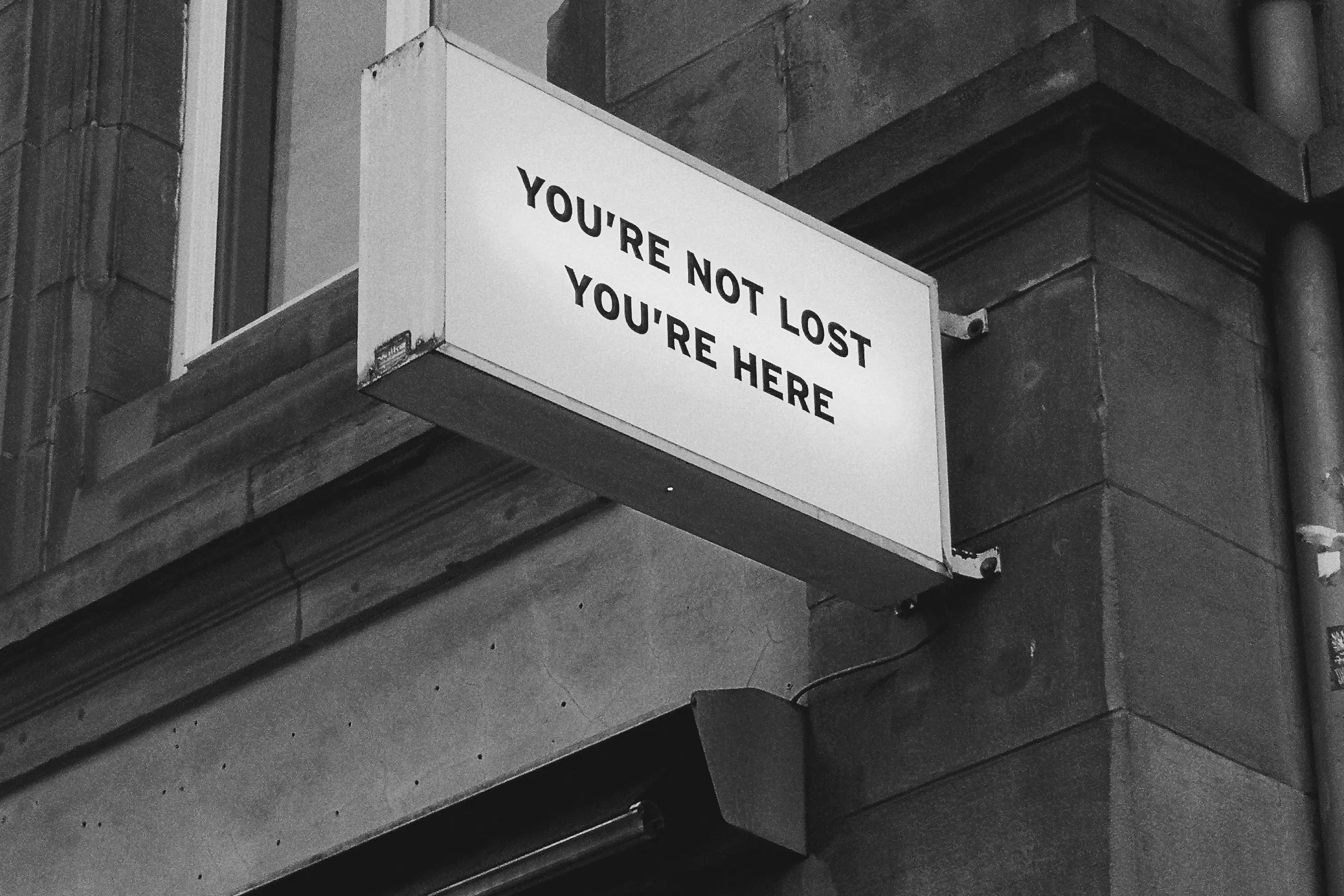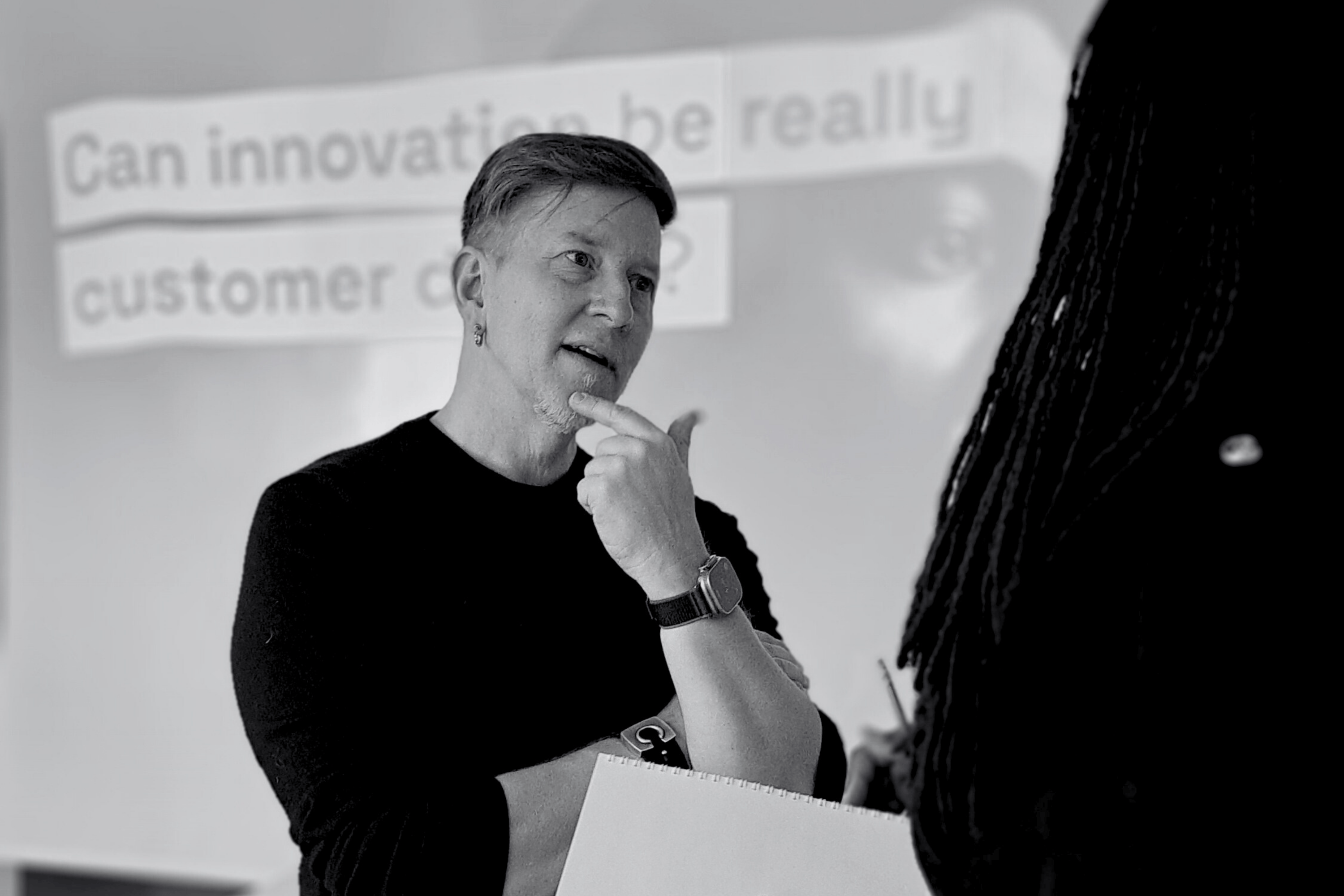
From designers to change agents
Welcome to part 1/7 of the Change Acceleration series!
Design's scope is expanding. So must we.
This foundational article introduces the shift from design as surface craft to design as a catalyst for organizational change. It establishes why service and systemic design are uniquely positioned to accelerate transformation — not through new frameworks, but by helping organizations gain traction where they're stuck. This exploration introduces the four systemic patterns that form the core of our Change Acceleration methodology: Friction, Disconnects, Systems Reliance, and Blind Spots.
From surface to system
For years, we’ve designed services. We’ve mapped journeys, uncovered pain points, connected teams, and made complex things easier to use. But the further we’ve gone, the clearer it’s become:
Design alone isn’t enough.
Too often, the services we design don’t land the way they should. Good strategies stall. Great ideas stay stuck in pilots. Promising roadmaps get lost in day-to-day friction.
It’s not because people don’t care, but because change is hard. The systems, structures, and habits inside organizations slow things down more than they should.
Over time, we’ve found ourselves working less on surfaces and more on what happens under them. Helping teams align, removing blockers. Building momentum.
That shift has changed how we work, and what we focus on.
As a designer and a design leader, I’ve seen the need for this shift firsthand. I’ve worked with companies that set their sights too high (“we want to be the next Apple”) and others that anchor too low (“in B2B there’s little need for customer insight – they buy what we tell retailers to sell”) In both cases, the result is the same: confusion. Teams don’t know what to aim for, what’s real, or what they’re expected to change. Without shared clarity, energy gets scattered. Or worse, wasted.
Design works but we've been playing small
At the same time, we know design works. McKinsey’s 2018 study The Business Value of Design tracked 300 publicly listed companies over five years and found that top-quartile design performers achieved 32% higher revenue growth and 56% higher shareholder returns compared to industry peers. Not because of aesthetics, but because design, when applied broadly, aligns products, services, and operations with real human needs. That alignment creates speed.
The problem is, we’ve too often limited that power to one part of the picture. We’ve constrained ourselves — and been constrained — to a touchpoint, a screen, or a single process. But change doesn’t happen at the edge. It happens across the whole.
And that’s more relevant now than ever.
Design has become a hygiene factor. Experience is no longer up for debate. Everyone knows it matters. Everyone has a team, a metric, a dashboard. So design is everywhere, embedded into tools, platforms, marketing stacks and internal systems.
But if design is already present in every organization, what should we focus on now?
Especially in an era shaped by AI, automation, and accelerating expectations, the opportunity isn’t in making one more screen smoother — it’s in surfacing what the systems miss. It’s in restoring clarity, speed, and shared understanding when the signal gets lost. That’s where design regains its leverage.
Traditional change management consultants have long worked on change acceleration — and they’ve made important contributions, especially in shaping frameworks and surfacing structural needs. Their frameworks often help surface structure, but rarely address how people actually move.
The same applies for strategies: they describe targets, but often leave delivery ambiguous. The runway to real change is long and uncertain.
The result in both cases? Organizations understand the need, but still struggle to move.
"The best way to predict the future is to design it." -Buckminster Fuller
A change of scope
That’s why a shift in scope was needed for us as designers.
We’ve stopped thinking about change as a deliverable or a loose target. We think of it as something to accelerate. Sometimes that means applying service design to services. Other times, it means using systemic design to reframe strategy, roles, or decision-making.
We’ve too often stopped short of the structures, like governance models, incentives, or platforms, that shape how organizations actually behave. That’s where we’ve started working now.
Because if design is already everywhere, the value isn’t in presence – it’s in placement.

In this new terrain, AI tools and platforms are changing what teams can build — and how fast. But they don’t change what’s worth building. That’s still a human question. That’s exactly where embedded service and systemic designers bring value: not as gatekeepers of polish, but as guides for direction, alignment, and clarity under pressure.
This isn’t just about better workshops or smoother handovers. It’s about creating shared understanding at scale — and turning that clarity into speed. When people know where they’re going, why it matters, and how their work connects, things start to move. Not in chaos, but with purpose.
We work to build that kind of momentum. Not around a screen or a service alone, but around the system that enables it.
What’s holding strategies back
This means tackling the real reasons why change efforts fail. Across industries and teams, the same patterns show up again and again.
In this series, we’ll look at four common barriers, and how design can help organizations move through them. Not by transforming from the top, but by redesigning how the next step is taken.
- Friction – when things slow down for the wrong reasons
- Disconnects – when people, goals, or data don’t align
- Systems reliance – when tools start running the show
- Blind spots – when critical signals go unseen
Each of these is now amplified by AI and automation. The stakes are higher, because the speed of execution has increased, but the cost of misalignment has multiplied. Platforms, systems, and strategies now move faster than the humans they’re meant to serve. If we don’t design for coherence, we accelerate confusion.
These are patterns of failure we can deliberately diagnose and accelerate through design. If we’re willing to look closely, ask better questions, and bring people together vertically in an organization around what really matters.
That’s what change acceleration is about.
Participate in the discussion:
Change Acceleration Series in LinkedIn
- From Designers to Change Agents (You are here)
- Friction - Where Momentum Gets Stuck
- Disconnects – When The Signal Breaks Down
- Systems Reliance – When The Tool Becomes The Strategy
- Stay tuned!
- Stay tuned!
- Stay tuned!
Recommended articles

Blind spots: When critical signals go unseen


Systems Reliance: When the tool becomes the strategy


